Ethinic Minorities
-

Jingpo ethnic group
The Jingpos, numbering 132,143, live mostly in the Dehong Dai-Jingpo Autonomous Prefecture, Yunnan Province, together with the De'ang, Lisu, Achang and Han peoples. A few of them are found in the Nujiang Lisu Autonomous Prefecture.
-
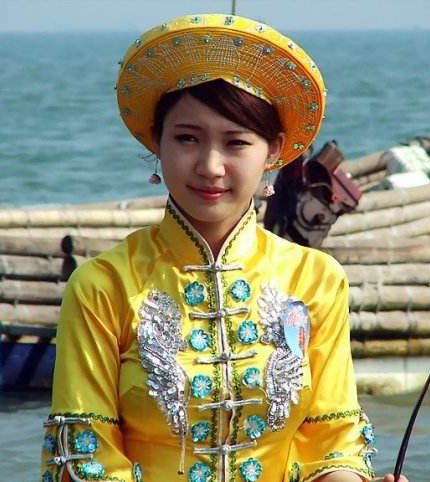
Jing ethnic group
The 22,517 people of this very small ethnic group live in compact communities primarily in the three islands of Wanwei, Wutou and Shanxin in the Fangcheng Multi-ethnic Autonomous County, the Guangxi Zhuang Autonomous Region, near the Sino-Vietnamese border.
-
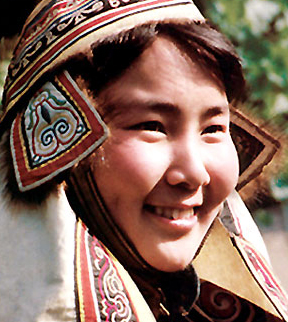
Hezhe ethnic group
The Hezhes are one of the smallest ethnic groups in China, with a population of 4,640 in 2000.
They are a nomadic people who live mainly by hunting and fishing in the plain formed by the Heilong, Songhua and Wusuli rivers in Tongjiang, Fuyuan and Raohe counties in northeast China's Heilongjiang Province.
-

Hani ethnic group
Most of the 1,439,673 Hanis live in the valleys between the Yuanjiang and Lancang rivers, that is, the vast area between the Ailao and Mengle mountains in southern Yunnan Province.
-
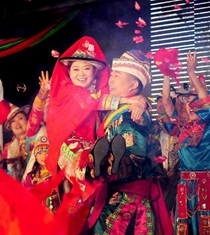
Yugur ethnic group
Nearly 90 percent of the Yugur people live in the Sunan Yugur Autonomous County, and the rest in Huangnibao area near the city of Jiuquan in western Gansu Province.
Due to historical reasons, this ethnic minority uses three languages: a Turkic branch of the Altaic language family (Raohul) used by the Yugurs in the western part of the autonomous county; a Mongolian branch of the same language family (Engle) by those in the eastern part of the county; and the Chinese language by those in Huangnibao. Chinese is also a common medium of communication among all Yugurs. -

Yi ethnic group
The Yi ethnic group, with a population of more than 7.76 million, is mainly distributed over the provinces of Sichuan, Yunnan and Guizhou, and the Guangxi Zhuang Autonomous Region. There are more than one million Yis in Sichuan Province, and most of them live in an area south of the Dadu River and along the Anning River. Traditionally, this area is subdivided into the Greater Liangshan Mountain area, which lies east of the Anning River and south of the Huangmao Dyke, and the Lesser Liangshan Mountain area, which covers the Jinsha River valley and the south bank of the Dadu River.
-
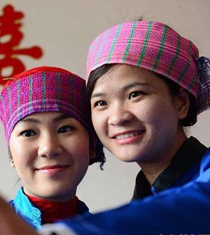
Yao ethnic group
The Yaos, with a population of 2,637,421, live in mountain communities scattered over 130 counties in five south China provinces and one autonomous region. About 70 percent of them live in the Guangxi Zhuang Autonomous Region, the rest in Hunan, Yunnan, Guangdong, Guizhou and Jiangxi provinces.
-
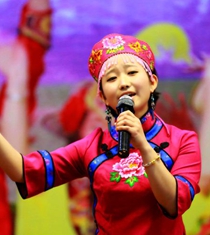
Xibe ethnic group
The Xibe ethnic minority, with a population of 188,824, is widely distributed over northern China from the Ili area in the Xinjiang Uygur Autonomous Region in the west to the northeast provinces of Jilin and Liaoning.
-

Va ethnic group
The Va ethnic minority, with a population of 396,610, lives in Ximeng, Cangyuan, Menglian, Gengma, Lancang, Shuangjiang, Zhenkang and Yongde counties in southwestern Yunnan Province. Some are found scattered in the Xishuangbanna Dai Autonomous Prefecture and the Dehong Dai-Jingpo Autonomous Prefecture. Ximeng and Cangyuan counties are the main places where the Va people live in compact communities. In the areas where the Va people live, there are also Hans, Yis, Dais, Hanis, Lahus, Jingpos, Blangs, De'angs and Lisus.
-

Tujia ethnic group
In the Wuling Range of western Hunan and Hubei provinces, at elevations from 400 to 1,500 meters, dwell more than 8 million people called the Tujias. They live mainly in the Xiangxi Tujia-Miao Autonomous Prefecture, Exi Tujia-Miao Autonomous Prefecture and some counties in southeastern Hunan and western Hubei. In these areas, the climate is mild but rainy, and the land is well-forested.